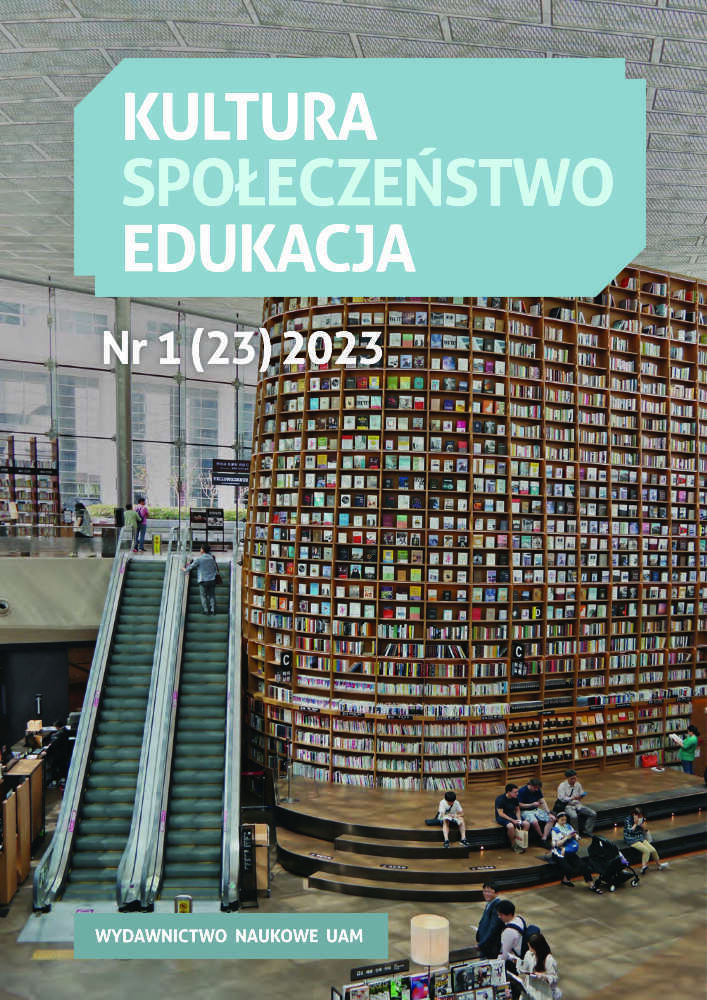Abstrakt
The article presents the issue of nervous systems and the neural correlate of information processing in the contextof the application of research results in this area in the process of supporting the rehabilitation of people with disabilities. The currently dynamically developing science of the borderland called “neuroscience” was presented, which is a great opportunity for special pedagogy to appear in its system, especially in the area of issues related to diagnosis and rehabilitation. The aim was to answer the question: What cognitive and research inspirations result from supporting the rehabilitation of people with disabilities with the achievements of neuroscience? The application of its achievements in the rehabilitation of people with disabilities has a complementary task, supporting an effective rehabilitation process in its practical dimension. The concept of a damaged brain of a disabled person was presented as a very general and imprecise one, resulting from diseases, injuries or developmental disorders, but which fundamentally affects the functioning of various areas of the brain, causing various symptoms and functional disorders. The essential and original part of the article is based on the latest literature on the subject, a review of the results of research on the brain work of people with various types of disabilities, made with the use of neuroimaging techniques. The concept of neuroplasticity was discussed in the context of obtaining an answer to the question: Can a damaged brain repair itself and how? By restoring, not bypassing, damaged or destroyed neural pathways. In conclusion, it was indicated that the intended effect of the discussed research is to create theoretical and empirical foundations for developing models of the functional architecture of the brain of a person with a specific type of disability, taking into account their individual capabilities, needs and even interests.
Bibliografia
Alvarez-Buylla, A., Garcia-Verdugo, J.M. (2002). Neurogenesis in adult subventricular zone. Journal of Neuroscience, 22(3), 629–634. DOI: https://doi.org/10.1523/JNEUROSCI.22-03-00629.2002
Blakemore, S.J., Frith, U. (2008). Jak uczy się mózg (R. Andruszko, tłum.). Wydawnictwo Uniwersytetu Jagiellońskiego.
Brown, T.T, Kuperman, J.M., Chung, Y., Erhart, M., McCabe, C., Hagler, D.J., Jr, Dale, A.M., Venkatraman, V.K., Akshoomoff, N., Amaral, D.G., Bloss, C.S., Casey, B.J., Chang, L., Ernst, T.M., Frazier, J.A., Gruen, J.R., Kaufmann, W.E., Kenet, T., Kennedy, D.N., Murray, S.S., Sowell, E.R., … Dale, A.M. (2012). Neuroanatomical assessment of biological maturity. Current Biology, 22(18),1693–1698. DOI: https://doi.org/10.1016/j.cub.2012.07.002
Cicchetti, D., Blender, J.A. (2006). A multiple-levels-of-analysis perspective on resilience. Implications for the developing brain, neural plasticity and preventive interventions. Annales of New York Academy of Sciences, 1094, 248–258. DOI: https://doi.org/10.1196/annals.1376.029
Diamond, A. (1996). Evidence for the importance of dopamine for prefrontal cortex functions early in life. Philosophical Transactions of the Royal Society of London. Series B, 351(1346), 1483–1494. DOI: https://doi.org/10.1098/rstb.1996.0134
Eliot, L. (2010). Co tam się dzieje? Jak rozwija się mózg i umysł w pierwszych pięciu latach życia (A. Jankowski, tłum.). Wydawnictwo Media Rodzina.
Milner, A.D. Goodale, M.A. (2008). Mózg wzrokowy w działaniu (G. Króliczak, tłum.). Wydawnictwo Naukowe PWN.
Nomi, J.S., Uddin, L.Q. (2015). Developmental changes in large-scale network connectivity in autism. NeuroImage. Clinical, 7, 732–741. DOI: https://doi.org/10.1016/j.nicl.2015.02.024
Nyka, W. (1996). Badania w chorobach układu nerwowego. W: L. Kalinowski (red.), Encyklopedia badań medycznych (s. 32–34). Wydawnictwo Makmed.
O’Shea, M. (2012). Mózg (P. Bucki, tłum.). Gdańskie Wydawnictwo Psychologiczne.
Pąchalska, M. (2009). Rehabilitacja neuropsychologiczna. Wydawnictwo UMCS.
Ramachandran, V.S. (2012). Neuronauka o podstawach człowieczeństwa. O czym mówi mózg? (A. Binder, M. Binder, E. Józefowicz, tłum.). Wydawnictwa Uniwersytetu Warszawskiego. DOI: https://doi.org/10.31338/uw.9788323529507
Rostowski, J. (2012). Rozwój mózgu człowieka w cyklu życia. Aspekty bioneuropsychologiczne. Wydawnictwo Difin.
Spitzer, M. (2007). Jak uczy się mózg (M. Guzowska-Dąbrowska, tłum.). Wydawnictwo Naukowe PWN.
Szeląg, E. (2005). Mózg a mowa. W: T. Gałkowski, E. Szeląg, G. Jastrzębowska (red.), Podstawy neurologopedii (s. 98–151). Wydawnictwo Uniwersytetu Opolskiego.
Vetulani, J. (2011). Mózg: fascynacje, problemy, tajemnice. Wydawnictwo Znak.
Zielińska, J. (2015). Metody obrazowania pracy mózgu w perspektywie pedagogiki specjalnej. Wybrane zagadnienia. Wydawnictwo Naukowe Uniwersytetu Pedagogicznego w Krakowie.
Zielińska, J. (2016). Wybrane techniki obrazowania sygnałów w perspektywie pedagogiki specjalnej. Przykłady zastosowania w praktyce diagnostyczno-terapeutycznej. Wydawnictwo Naukowe Uniwersytetu Pedagogicznego w Krakowie.
Licencja
Prawa autorskie (c) 2023 Jolanta Zielińska

Utwór dostępny jest na licencji Creative Commons Uznanie autorstwa – Bez utworów zależnych 4.0 Międzynarodowe.

